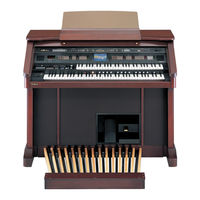User Manuals: Roland Music Atelier AT80S Console Organ
Manuals and User Guides for Roland Music Atelier AT80S Console Organ. We have 2 Roland Music Atelier AT80S Console Organ manuals available for free PDF download: Owner's Manual, Turbostart
Roland Music Atelier AT80S Owner's Manual (236 pages)
Roland Musical Instrument Owner's Manual AT90S, 80S, 60S
Brand: Roland
|
Category: Musical Instrument
|
Size: 8 MB
Table of Contents
Advertisement
Roland Music Atelier AT80S Turbostart (3 pages)
Atelier Organ
Brand: Roland
|
Category: Musical Instrument
|
Size: 0 MB

